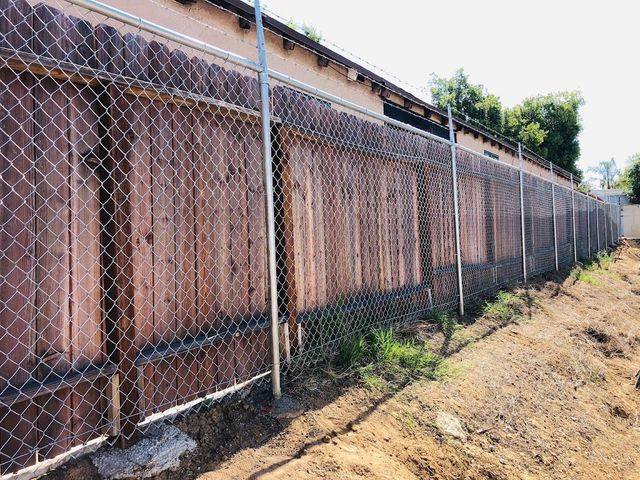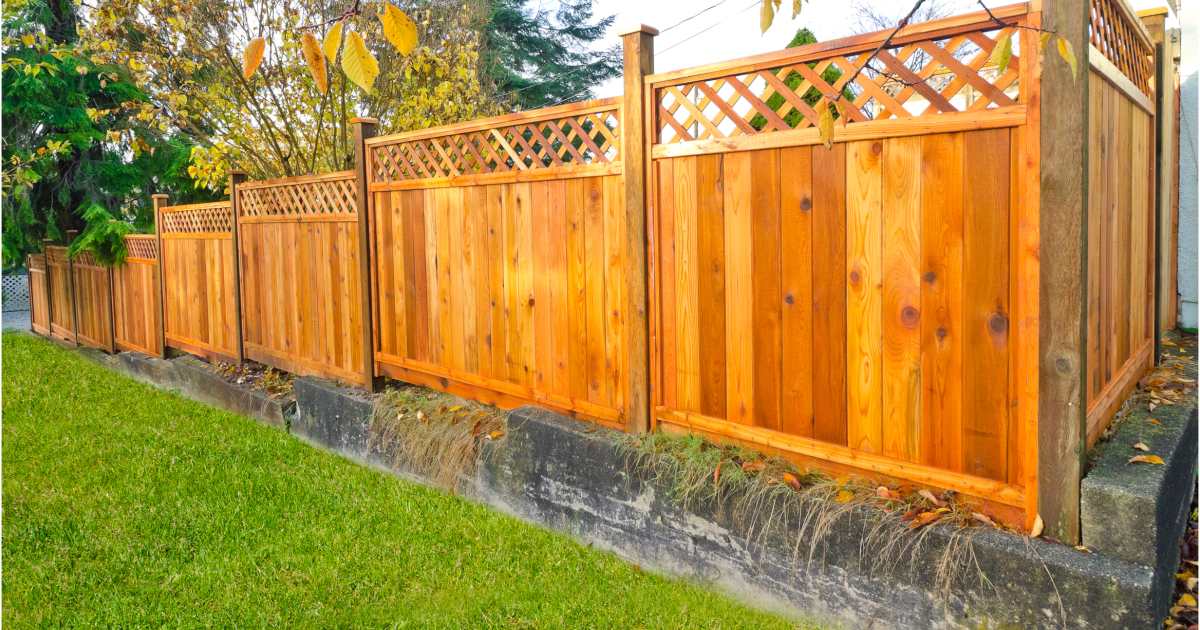All Categories
Featured
Your fence is a financial investment that gives security, personal privacy, and curb allure. To maintain it in superb shape, normal maintenance customized to its material is crucial. Each fence type has one-of-a-kind upkeep needs based upon its material's longevity, exposure to the components, and other variables. Here's an in-depth overview to preserving different fencing materials.
![]()
Weather Security: Apply a top notch sealant or stain every 2-- 3 years to protect the wood from wetness and UV rays. For severe climates, yearly reapplication may be essential. Cleaning: Use a yard pipe or a stress washer on a reduced setup to eliminate dust and mildew. Adhere to up with a light cleaning agent for stubborn stains. Repairs: Look for loosened or deteriorating boards and replace them quickly. Tighten up screws or nails to keep the framework stable. Parasite Control: Use termite-resistant wood or treat the fence with pest repellents to avoid problems. 2. Plastic Fencings. Plastic fences are prominent for their toughness and minimal maintenance requirements.
Cleansing: Clean the surface with a yard hose or a mixture of soap and water to get rid of dirt and algae. For hard stains, utilize a soft-bristle brush or a vinyl-specific cleanser. Assessments: Frequently evaluate for cracks or warping, especially after solid winds or heavy influences. Repairs: Replace any kind of broken areas instantly. Vinyl fences usually utilize modular elements, making fixings straightforward. 3. Chain-Link Fences. Chain-link fencings are economical and sturdy however call for periodic interest to avoid rust.
Corrosion Elimination: Utilize a cord brush to get rid of corrosion from exposed areas, then apply a rust-inhibiting spray to shield the steel. Cleaning: Hose down the fencing frequently to eliminate dirt. For gunk, use soapy water and a stiff-bristle brush. Repair work: Tighten up any sagging sections or change damaged links to preserve safety and security. 4. Wrought Iron Fencings. Wrought iron fencings provide longevity and style yet are vulnerable to corrosion if not effectively maintained.
![]()
Rust Prevention: Remove rust places with sandpaper and apply a rust-resistant primer followed by exterior metal paint. Check for corrosion a minimum of twice a year. Cleaning: Clean down with a towel and soapy water to maintain the coating. Stay clear of abrasive cleaners that can damage the surface. Repainting: Repaint every couple of years to protect the steel from deterioration and maintain it looking fresh. 5. Light weight aluminum Fences. Light weight aluminum fences are light-weight, durable, and immune to rust, requiring less maintenance compared to wrought iron.
Cleaning: Clean with soap and water to eliminate dirt and dirt. Rinse extensively to stop residue. Examinations: Look for loosened hardware or damages, especially after storms. Secure or change parts as required. Touch-Ups: Use paint to damaged or cracked areas to avoid damages to the protective finish. 6. Composite Fences. Compound fencings are made from a mix of wood and plastic, combining durability with very little maintenance.
![]()
Cleaning: Utilize a hose pipe or a soft brush with soap and water to clean up the surface area. Prevent utilizing harsh chemicals. Inspections: Seek warping, especially in severe heat. Tighten or replace any damaged panels. Mold Avoidance: While composite materials withstand rot, maintain the fence tidy and completely dry to stay clear of mold and mildew buildup. 7. Bamboo Fences. Bamboo is an eco-friendly alternative however needs careful maintenance to preserve its look and long life.
Sealing: Apply a protective sealant or varnish every 2-- 3 years to defend against moisture and UV damage. Cleansing: Clean with light soap and a soft sponge or brush. Prevent high-pressure washing, which can harm bamboo fibers. Fixings: Replace harmed poles or sections to preserve architectural stability and look. General Maintenance Tips for All Fence Kind. Routine Examinations: Examine your fencing at least as soon as every season for damage, wear, or loose components. Cutting Greenery: Maintain plants, hedges, and creeping plants away from the fence to avoid moisture damage and decrease parasite task. Seasonal Modifications: In areas with snow, avoid loading snow versus your fencing to prevent architectural stress. In warm environments, evaluate for heat-related warping or fading. Conclusion. Each fence material has its special upkeep demands, but an aggressive strategy to care can prolong its lifespan and keep it looking its ideal. Wood fences require more interest contrasted to vinyl or aluminum, however each material gain from regular cleansing, examinations, and timely repair services. By customizing your maintenance methods to the kind of fencing you have, you'll make certain that it remains to provide personal privacy, protection, and curb charm for many years to find.

- Wood Fences. Wooden fencings are valued for their natural look but call for regular maintenance to avoid damage.
Weather Security: Apply a top notch sealant or stain every 2-- 3 years to protect the wood from wetness and UV rays. For severe climates, yearly reapplication may be essential. Cleaning: Use a yard pipe or a stress washer on a reduced setup to eliminate dust and mildew. Adhere to up with a light cleaning agent for stubborn stains. Repairs: Look for loosened or deteriorating boards and replace them quickly. Tighten up screws or nails to keep the framework stable. Parasite Control: Use termite-resistant wood or treat the fence with pest repellents to avoid problems. 2. Plastic Fencings. Plastic fences are prominent for their toughness and minimal maintenance requirements.
Cleansing: Clean the surface with a yard hose or a mixture of soap and water to get rid of dirt and algae. For hard stains, utilize a soft-bristle brush or a vinyl-specific cleanser. Assessments: Frequently evaluate for cracks or warping, especially after solid winds or heavy influences. Repairs: Replace any kind of broken areas instantly. Vinyl fences usually utilize modular elements, making fixings straightforward. 3. Chain-Link Fences. Chain-link fencings are economical and sturdy however call for periodic interest to avoid rust.
Corrosion Elimination: Utilize a cord brush to get rid of corrosion from exposed areas, then apply a rust-inhibiting spray to shield the steel. Cleaning: Hose down the fencing frequently to eliminate dirt. For gunk, use soapy water and a stiff-bristle brush. Repair work: Tighten up any sagging sections or change damaged links to preserve safety and security. 4. Wrought Iron Fencings. Wrought iron fencings provide longevity and style yet are vulnerable to corrosion if not effectively maintained.

Rust Prevention: Remove rust places with sandpaper and apply a rust-resistant primer followed by exterior metal paint. Check for corrosion a minimum of twice a year. Cleaning: Clean down with a towel and soapy water to maintain the coating. Stay clear of abrasive cleaners that can damage the surface. Repainting: Repaint every couple of years to protect the steel from deterioration and maintain it looking fresh. 5. Light weight aluminum Fences. Light weight aluminum fences are light-weight, durable, and immune to rust, requiring less maintenance compared to wrought iron.
Cleaning: Clean with soap and water to eliminate dirt and dirt. Rinse extensively to stop residue. Examinations: Look for loosened hardware or damages, especially after storms. Secure or change parts as required. Touch-Ups: Use paint to damaged or cracked areas to avoid damages to the protective finish. 6. Composite Fences. Compound fencings are made from a mix of wood and plastic, combining durability with very little maintenance.

Cleaning: Utilize a hose pipe or a soft brush with soap and water to clean up the surface area. Prevent utilizing harsh chemicals. Inspections: Seek warping, especially in severe heat. Tighten or replace any damaged panels. Mold Avoidance: While composite materials withstand rot, maintain the fence tidy and completely dry to stay clear of mold and mildew buildup. 7. Bamboo Fences. Bamboo is an eco-friendly alternative however needs careful maintenance to preserve its look and long life.
Sealing: Apply a protective sealant or varnish every 2-- 3 years to defend against moisture and UV damage. Cleansing: Clean with light soap and a soft sponge or brush. Prevent high-pressure washing, which can harm bamboo fibers. Fixings: Replace harmed poles or sections to preserve architectural stability and look. General Maintenance Tips for All Fence Kind. Routine Examinations: Examine your fencing at least as soon as every season for damage, wear, or loose components. Cutting Greenery: Maintain plants, hedges, and creeping plants away from the fence to avoid moisture damage and decrease parasite task. Seasonal Modifications: In areas with snow, avoid loading snow versus your fencing to prevent architectural stress. In warm environments, evaluate for heat-related warping or fading. Conclusion. Each fence material has its special upkeep demands, but an aggressive strategy to care can prolong its lifespan and keep it looking its ideal. Wood fences require more interest contrasted to vinyl or aluminum, however each material gain from regular cleansing, examinations, and timely repair services. By customizing your maintenance methods to the kind of fencing you have, you'll make certain that it remains to provide personal privacy, protection, and curb charm for many years to find.
Latest Posts
Discover Special Auto Repair Offers in Chicago at Montclare Auto Repair
Published en
1 min read
Explore Affordable Auto Repairs with Montclare’s Limited-Time Service Specials
Published en
1 min read
Unlock Your Financial Partner at WyHy – Top Benefits for Your Financial Success
Published en
1 min read
More
Latest Posts
Discover Special Auto Repair Offers in Chicago at Montclare Auto Repair
Published May 27, 25
1 min read
Explore Affordable Auto Repairs with Montclare’s Limited-Time Service Specials
Published May 25, 25
1 min read
Unlock Your Financial Partner at WyHy – Top Benefits for Your Financial Success
Published May 25, 25
1 min read